 Back to the Be Inspired Blog
Back to the Be Inspired Blog
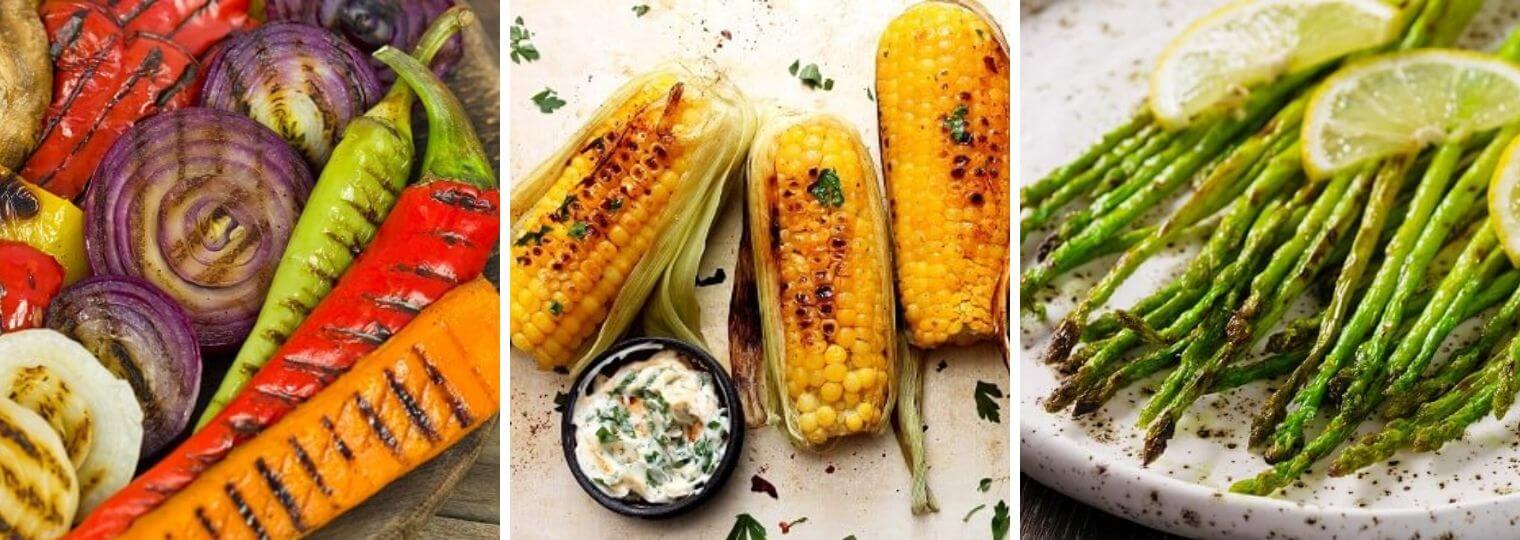
The Best Homegrown Vegetables To Throw On The Grill This Summer
Everything tastes better when you’ve made it yourself – and that includes what you cook up on the grill. While an average backyard is no place to raise animals much larger than chickens, it is the perfect place to grow a variety of herbs and vegetables that will add a add a new twist to your summer grilling sessions.
Not only will the flavor of homegrown vegetables be better than any you can buy in the grocery store, but you won’t have to worry about pesticides or chemical ripening agents. And if you’re planning on entertaining, telling your guests you grew the vegetables yourself is guaranteed to impress.
Herbs Are Easy To Grow And Great For Grilling
Let’s start with the basics: herbs! You can grow a wide variety in portable planters, which makes them ideal for small spaces and easy to move back and forth. Carry them into the kitchen and snip a few sprigs to go into your marinade or to garnish drinks like mojitos or iced tea. Carry them outside next to the grill and add a smoky sage or rosemary flavor to your meats.

Rosemary
The easiest way to grow rosemary in a pot is to start with a small bedding plant from a garden center or nursery, as rosemary is difficult to grow from seed. Plant the rosemary at the same depth it is planted in the container since planting too deeply may suffocate the plant.
Water your plant when the top 1-2 inches of soil are dry to the touch. Overwatering is the most common cause of death for container rosemary.
Basil
Basil is a warm weather annual herb and thrives in the sun. It benefits from frequent harvesting, so use it often! You can also pinch the top leaves off of young plants to encourage sideways growth and a larger overall yield. Be sure to pinch off any flower buds that appear too – once basil begins to flower, the leaf flavor declines quickly.
Oregano
Oregano is an enthusiastic grower in the garden and putting it in a pot is an easy and beautiful way to control its growth. The small leaves are packed with flavor, perfect for topping homemade pizza and bruschetta, as well as adding to vinaigrettes and marinades.

Parsley
It’s best to start parsley from seeds sown directly in the container because parsley has a long tap root that doesn’t transplant well. Sprinkle a few seeds on the surface of the soil and cover them with an additional 1/4 inch of soil. Water the pot regularly to keep the soil moist to the touch but not soggy, and expect seedlings to emerge in three weeks or so.
Parsley is a beautiful addition to salads or chopped and sprinkled as a final touch on finished dishes!
Homegrown Vegetables To Grill And Amaze
Now that you have your herb bucket sorted, let’s move on to the easy-to-grow vegetables that should be gracing your grill.
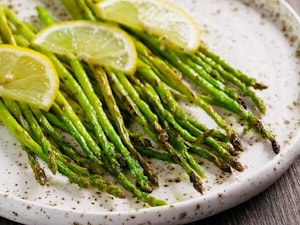
Asparagus
Growing asparagus is a long-term relationship, but the payoff is so delicious! This perennial plant is best planted from crown, instead of seed, and needs a lot of water and careful weeding to establish itself. The first year you may only get a few usable spears, but if you take care of your plot it will continue to produce a hardy vegetable harvest for up to 30 years.
Toss it on the grill with some oil and salt for a crisp but tender side dish that goes well with just about anything.
Radishes
On the other end of the timeline, radishes are one of the fastest plants you can take from seed to grill. You can plant them several times during the growing season for multiple harvests. Cover the seeds with a half-inch of soil and water well. Thin them out to one or two inches apart and harvest in six to eight weeks.
Radishes can be tossed on the grill whole and served with a variety of dips, or sliced and quickly pickled to top burgers, tacos and more.
Eggplant
You can start these vegetables inside from seed 8-10 weeks before the soil is warm enough to move them outside, or you can purchase starts and transplant them into your garden plot. These plants grow similarly to tomatoes (with the fruit hanging) so provide them a stake or cage for support right away. Keep the soil moist and fertilize every two weeks. You can harvest between 16 and 24 weeks later, as soon as the eggplant skin is shiny and unwrinkled!
Eggplant can be sliced and grilled as a main dish for vegetarians, or served as a grilled side salad with garlic, feta and cumin.
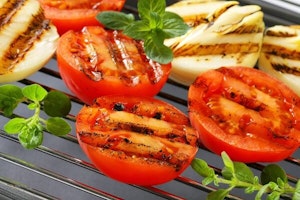
Tomatoes
You can start tomatoes inside from seed 4-6 weeks before the last frost, and transplant (or plant your purchased starts) when overnight temperatures are near 60 degrees. Tomatoes love the sun and heat, so make sure to pick a bright corner of your yard. Depending on variety, they’ll be ready for harvest between 60 and 120 days.
Besides their classic applications as a burger topping and salad filler, tomatoes perform fantastically on the grill. Slice them in half for grilling and toss with some olive oil and fresh basil and mozzarella.
Onions
Red, yellow, white, and sweet – these bulbs are delicious in all their forms. Onion can certainly be grown from seed, but they take quite a while to reach maturity. Instead, consider growing onion from “sets,” which look like little bulbs and are planted directly in the ground. Harvesting time is dependent on the variety, but a good rule of thumb is that the onion is ready when the bulb is visible through the top layer of soil and the foliage begins to turn yellow.
Onions are a classic topping for burgers and hot dogs, but they can also be roasted whole on a low-heat grill or smoker, or sliced and grilled to caramelize their sugars and bring out the sweetness before adding to salads or eating on their own.
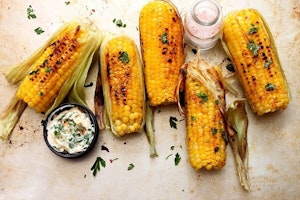
Corn
Corn needs a lot of space. It may not be practical for all yards, but if you have the room to spare then prepare to be amazed. Sweet corn grows best in full sun and warm soil, and can be planted from seed as late as early July. Plant at least four rows of ears, each four feet long, to ensure proper pollination. Each stalk should produce at least one large ear, although some varieties will produce a second, smaller ear, that develops after the first one is harvested. It takes 65 to 95 days to mature, depending on variety, but your corn is ready to harvest when the unhusked ear has tightly folded, green leaves and dried, dark brown silk.
Corn is best eaten immediately after harvesting, so plan a barbecue around it! Invite your guests to pick their own ear (snap them off the plant with a quick, firm, downward pull and twist) and toss it straight on the grill to cook in its own leaves. You’ll be amazed at just how sweet and juicy it can be – no butter or salt necessary!
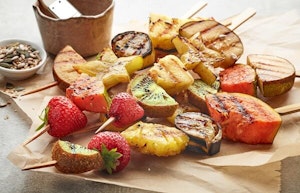
Grill Up A Sweet Treat For Dessert
Some of our favorite grilled fruits, like peaches and pineapple, are much easier to find at your local farmer’s market than grow in the backyard – but that doesn’t mean there’s aren’t plenty of delicious alternatives you can keep on hand.
Strawberries
The best strawberries you’ll ever taste will come from your garden. Their flavor and aroma just can’t be matched by the grocery store fruit that comes in a plastic clamshell container. These sturdy plants are easy to start and don’t need a lot of maintenance, which makes them ideal for those with a less-than-green thumb. We recommend growing from starts, which can be purchased at a nursery like SummerWinds. They’ll need at least eight hours of sunlight a day regular watering. Most varieties are ready to harvest 30 days after the blossoms have been pollinated.
Because strawberries tend to be on the smaller side, we recommend using skewers (you can alternate the berries with small lemon slices for an extra treat) to cook them on the grill. You can enjoy them as-is, or brush them with a mixture of melted butter, honey and lemon zest for an extra burst of flavor.
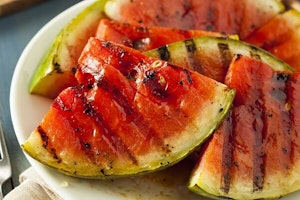
Watermelon
Watermelon is the perfect summer treat all on its own, but tossing a slice on the grill transforms it into something else entirely. These delicious fruits have a long growing season and require a lot of space (vines can easily reach 20 feet in length), but are easy to maintain; growing from seed is well worth the payoff.
Mound your dirt into a hill and press 10 seeds about an inch deep. Multiple hills should be at least 3-4 feet away from each other. Once the seeds have sprouted, thin to three sprouts each. Water regularly to keep the plant’s deep roots moist, but stop entirely two weeks after the fruit appears in order to increase the sweetness of the final product. Watermelon are mature about five weeks after flowering.
To grill them, try brushing lightly with olive oil to encourage a light smoky flavor. Then squeeze a fresh lime over the top and sprinkle with mint or cilantro.
Come Grill The Experts At SummerWinds
Have questions about starting your own grill garden? The experts at SummerWinds nursery have the answers! They can help with recommendations on plants and gardening arrangements, so come and stop by any one of our South Bay Area locations.

